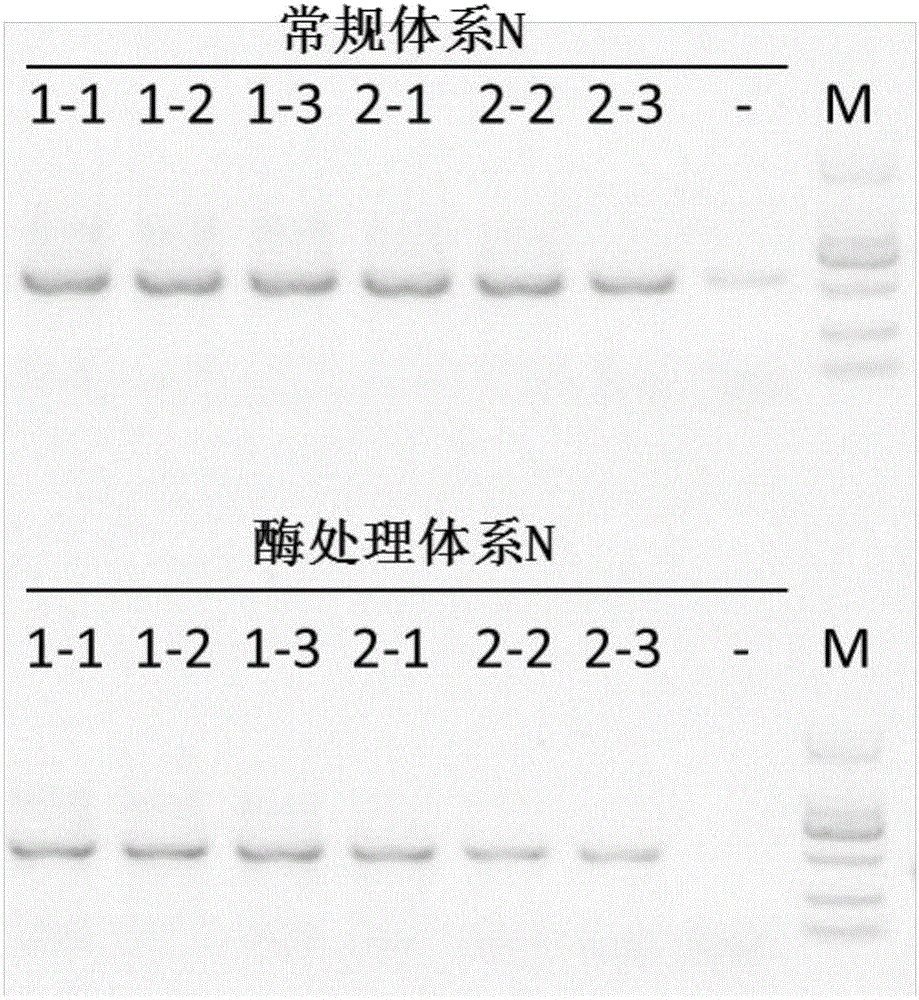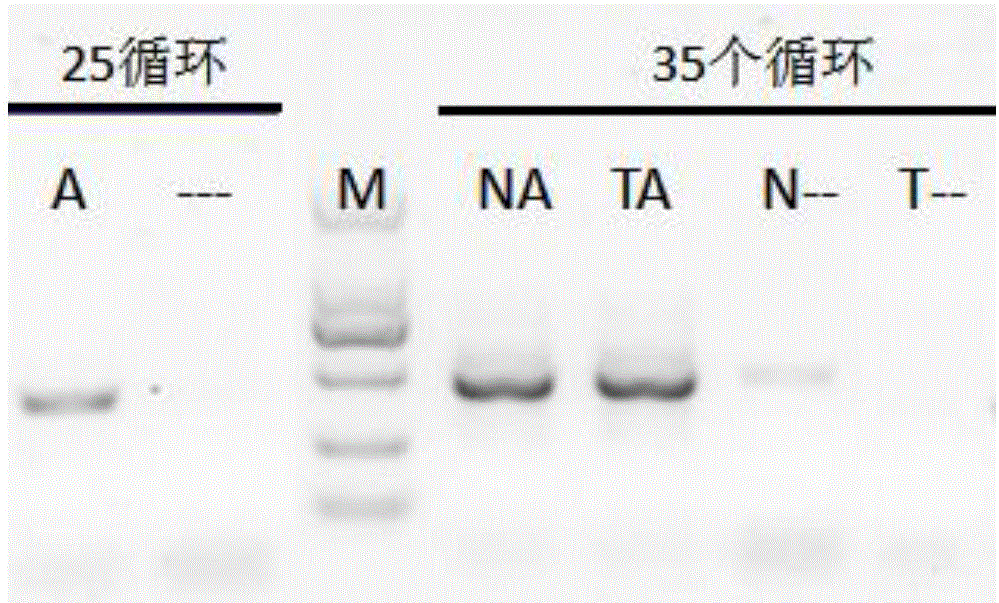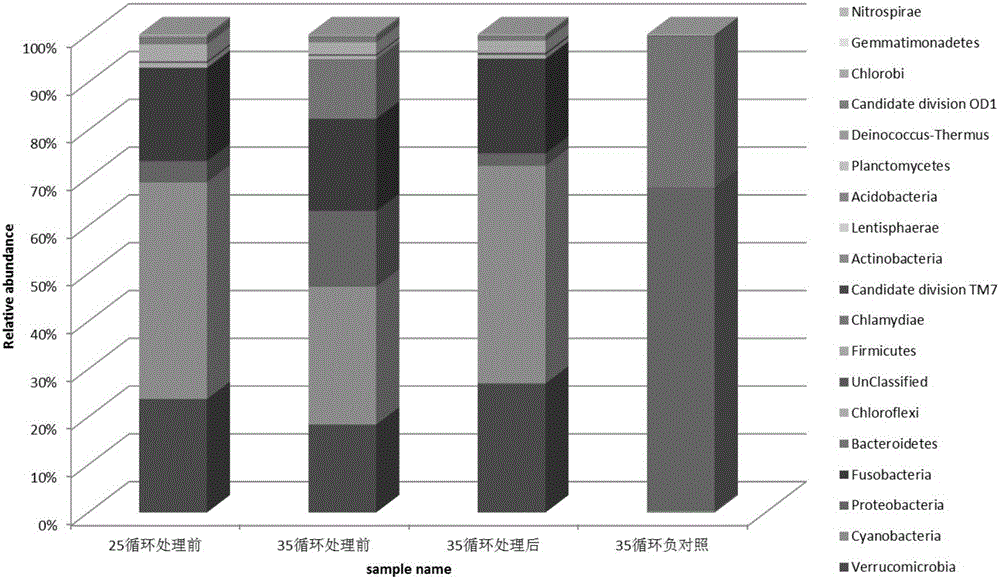PCR pollution prevention method and applications thereof
A technology of reaction solution and reaction system, applied in the field of biotechnology and molecular biology, to achieve the effect of increasing difficulty and complexity, eliminating pollution sources, and simple and easy experimental operation
- Summary
- Abstract
- Description
- Claims
- Application Information
AI Technical Summary
Problems solved by technology
Method used
Image
Examples
Embodiment 1B
[0031] Embodiment 1 Benzonase nuclease carries out pretreatment to PCR reaction system
[0032] Benzonase nuclease (purchased from Merck company) final concentration is 10 -8 U / μL~10 -1 U / μL, when used, add Benzonase nuclease to the conventional PCR reaction system (see Table 2) that removes primers and templates, divide the processed system into 96-well plates, and perform subsequent processing in a PCR machine .
[0033] Table 1 Conventional PCR reaction system
[0034] Element concentration Taq DNA polymerase 5U 10× enzyme buffer 5μL dNTPs 100μmol / L template DNA 1ng-100ng forward primer 200nM reverse primer 200nM double distilled water Make up to 50μL
[0035] Table 2 has removed the conventional PCR reaction system of primer and template
[0036] Element concentration Taq DNA polymerase 5U 10× enzyme buffer 5μL dNTPs 100μmol / L double distilled water Make up to 47μL ...
Embodiment 2
[0044] Embodiment 2: the application of the present invention in common qualitative PCR
[0045] The PCR reaction system treated with Benzonase nuclease (see Example 1) and the conventional PCR reaction system (that is, the PCR reaction system not treated with Benzonase nuclease) were used to amplify the 16S V3-V4 region of the sample by PCR, 33 cycles , the electrophoresis detection results are as follows figure 1 shown.
[0046] The results of electrophoresis showed that when the PCR amplification reached 33 cycles, the negative control of the conventional PCR reaction system had obvious bands, but the negative control of the PCR reaction system treated with Benzonase nuclease could not detect any bands at all.
[0047] From the results of electrophoresis, we can preliminarily know that the enzyme treatment system can remove the background pollution caused by pollution sources such as system and aerosol, but if the enzyme treatment system is applied to high-throughput techn...
Embodiment 3
[0048] Example 3: Application of the present invention in high-throughput sequencing molecular library construction
[0049] Select A sample, and use the PCR reaction system treated with Benzonase nuclease (see Example 1) and the conventional PCR reaction system (that is, the PCR reaction system without Benzonase nuclease treatment) to perform PCR on the V3-V4 region of its 16S rRNA gene For amplification, the target band can be detected in the amplified sample but the negative control cannot detect the band as the standard, and this sample is used as the positive control. When the cycle number increased, the negative control could detect the corresponding target band, but the negative control of the treatment system could not detect the target band. The results of electrophoresis were as figure 2 shown.
[0050] The above 4 samples (such as figure 2 A, NA, TA, N--) in Illumina Miseq high-throughput sequencing, statistical analysis of optimized sequences after quality scr...
PUM
 Login to View More
Login to View More Abstract
Description
Claims
Application Information
 Login to View More
Login to View More - R&D
- Intellectual Property
- Life Sciences
- Materials
- Tech Scout
- Unparalleled Data Quality
- Higher Quality Content
- 60% Fewer Hallucinations
Browse by: Latest US Patents, China's latest patents, Technical Efficacy Thesaurus, Application Domain, Technology Topic, Popular Technical Reports.
© 2025 PatSnap. All rights reserved.Legal|Privacy policy|Modern Slavery Act Transparency Statement|Sitemap|About US| Contact US: help@patsnap.com



